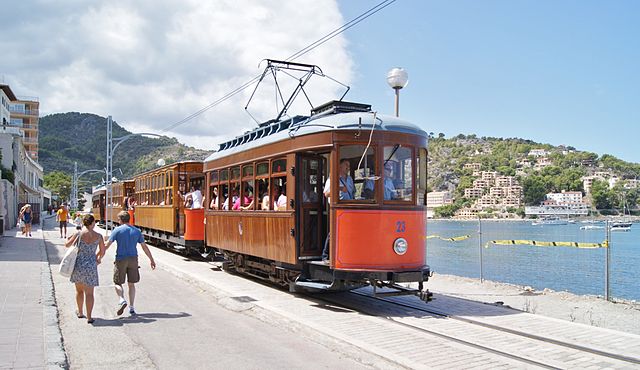The Dun Mountain Railway was a privately owned and operated 3 ft narrow gauge, 21.5 km (13.4 mi) long horse-drawn tramway from chromite mines in the vicinity of Duppa Lode on the eastern slopes of Wooded Peak to Nelson port in the Tasman District of New Zealand's South Island. It operated from 3 February 1862 to 30 May 1901, with the last mineral traffic on the incline section operated in January 1866.
Dun Mountain Railway
Stack of wooden ties beside the Dun Mountain Railway in heavily wooded country
Opening of Dun Mountain tramway, 3 Feb 1862
Freight train of the Dun Mountain railway. Trucks were pulled up the grade by horses, and descended by gravity.
Three foot gauge railways have a track gauge of 3 ft or 1 yard. This gauge is a narrow gauge and is generally found throughout North, Central, and South America. In Ireland, many secondary and industrial lines were built to 3 ft gauge, and it is the dominant gauge on the Isle of Man, where it is known as the Manx Standard Gauge. Modern 3 ft gauge railways are most commonly found in isolated mountainous areas, on small islands, or in large-scale amusement parks and theme parks. This gauge is also popular in model railroading, and model prototypes of these railways have been made by several model train brands around the world, such as Accucraft Trains (US), Aristo-Craft Trains (US), Bachmann Industries, Delton Locomotive Works (US), LGB (Germany), and PIKO (Germany).
Fintown station on the trackbed of the County Donegal Railways Joint Committee (CDR) in County Donegal
A bridge of the defunct National Railroad of Mexico in 1883
A railbus on the Ferrocarril Santa Ana near Machu Picchu
An electric tram on the Tranvía de Sóller on the Spanish island of Majorca








